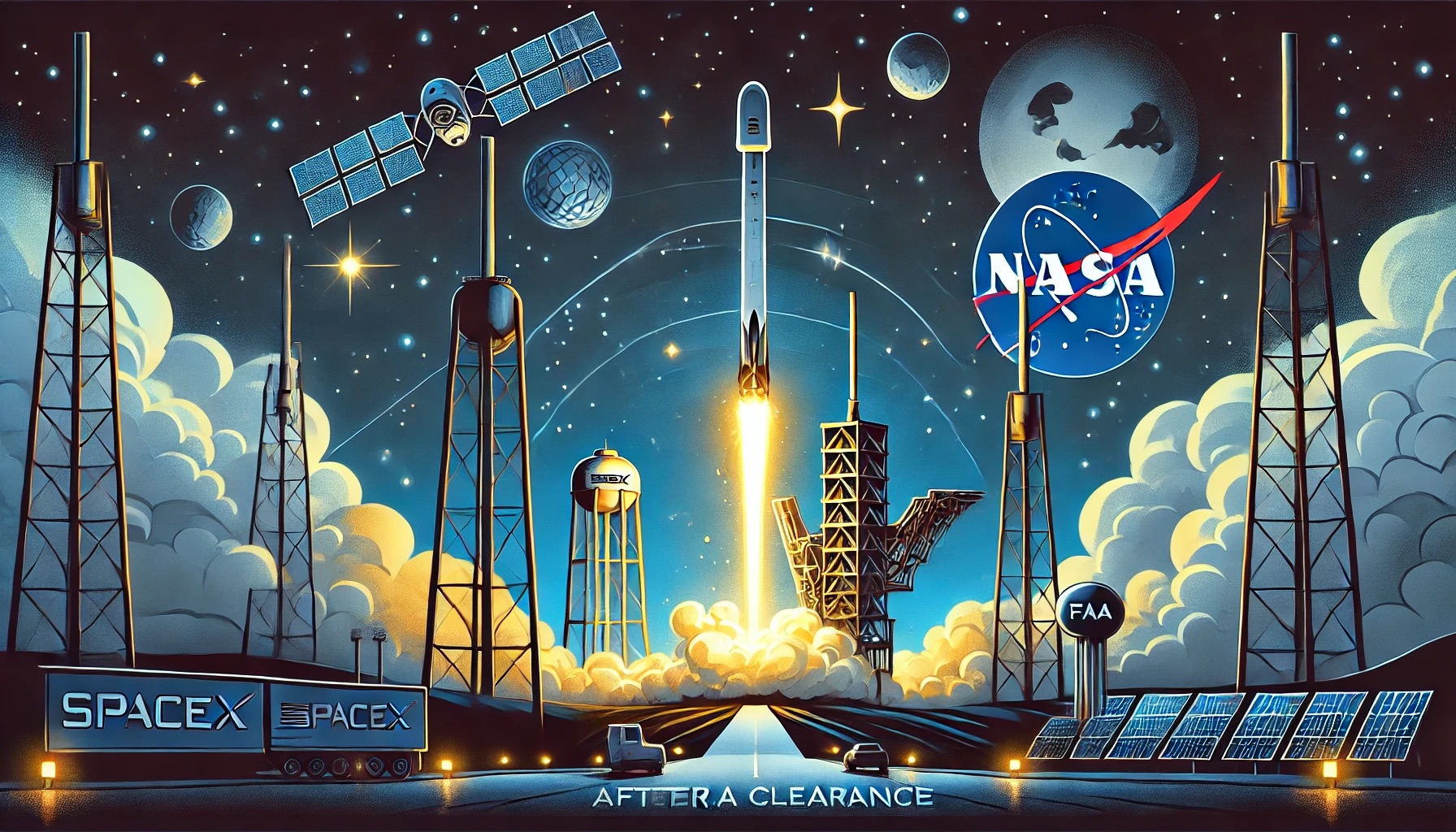The FAA has authorized SpaceX’s Falcon 9 rocket to resume routine launches following an investigation into three mishaps, including a second-stage engine failure and a failed booster landing during Starlink and NASA missions. SpaceX has since implemented corrective actions to prevent future incidents.
SpaceX Faces Setbacks with Falcon 9: Engine Failure and Booster Crash End 325-Day Success Streak
SpaceX has been granted permission by the Federal Aviation Administration (FAA) to recommence routine operations with its Falcon 9 rocket, which was disrupted by three incidents earlier this year. Among the mishaps were a second-stage malfunction in space, a second-stage failing to descend at its designated location, and a first-stage booster tipped over. SpaceX conducted a mission for the European Space Agency (ESA) after these incidents; however, this mission did not necessitate the return of the second-stage rocket or booster to Earth, which permitted it to proceed with an exemption.
The Falcon 9's second-stage engine failed to ignite during a July Starlink mission, resulting in the initial incident. The mission was ultimately unsuccessful, as its payloads were destroyed, and multiple engine firings were required to propel the Starlink satellites to their intended orbits. This was the first malfunction of SpaceX's Falcon 9 Block 5 rocket and the culmination of the company's 325-day streak of successful launches.
The first-stage booster was involved in the second mishap during an additional Starlink launch. After attempting a record-setting 23rd landing, the booster made a hard impact on SpaceX's drone ship, causing it to tip over. This was SpaceX's first landing failure in over three years, following a successful run of 267 landings.
SpaceX Falcon 9 Cleared for Launches After Modifications and NASA Collaboration Resolve Anomalies
SpaceX modified its rockets following the initial second-stage anomaly. NASA's close collaboration with the company to analyze the causes resulted in the Crew-9 mission being successfully launched in late September. Nevertheless, SpaceX grounded its Falcon 9 following that mission because the second stage landed outside its designated location.
Since then, SpaceX has only executed one mission: the Hera satellite launch for the European Space Agency. The Falcon 9 first-stage booster was unable to be recovered by SpaceX due to the mission's increased power requirements, which were part of NASA's planetary defense endeavor with the Didymos asteroid system. Furthermore, the FAA was able to grant clearance for this solitary launch because the second-stage booster was not intended to return to Earth.
The Federal Aviation Administration (FAA) has officially authorized Falcon 9 for routine operations. According to the agency's statement, it had "notified SpaceX on October 11 that the Falcon 9 vehicle is authorized to return to regular flight operations" following its evaluation and acceptance of SpaceX's investigation findings and corrective actions. The FAA also announced that the SpaceX-led investigations into the Falcon 9 accidents from the Starlink 9-3 (July 11) and Starlink 8-6 (August 28) missions had been concluded.



 NASA Partners with Katalyst to Save Swift Observatory with Innovative Docking Mission
NASA Partners with Katalyst to Save Swift Observatory with Innovative Docking Mission  FDA Pilot Program Eases Rules for Nicotine Pouch Makers
FDA Pilot Program Eases Rules for Nicotine Pouch Makers  Ancient Mars may have had a carbon cycle − a new study suggests the red planet may have once been warmer, wetter and more favorable for life
Ancient Mars may have had a carbon cycle − a new study suggests the red planet may have once been warmer, wetter and more favorable for life  SpaceX’s Starship Completes 11th Test Flight, Paving Way for Moon and Mars Missions
SpaceX’s Starship Completes 11th Test Flight, Paving Way for Moon and Mars Missions  Neuren Pharmaceuticals Surges on U.S. Patent Win for Rare Disorder Drug
Neuren Pharmaceuticals Surges on U.S. Patent Win for Rare Disorder Drug  Eli Lilly’s Inluriyo Gains FDA Approval for Advanced Breast Cancer Treatment
Eli Lilly’s Inluriyo Gains FDA Approval for Advanced Breast Cancer Treatment  Lost in space: MethaneSat failed just as NZ was to take over mission control – here’s what we need to know now
Lost in space: MethaneSat failed just as NZ was to take over mission control – here’s what we need to know now  Astronomers have discovered another puzzling interstellar object − this third one is big, bright and fast
Astronomers have discovered another puzzling interstellar object − this third one is big, bright and fast  Neuralink Expands Brain Implant Trials with 12 Global Patients
Neuralink Expands Brain Implant Trials with 12 Global Patients  SpaceX Starship Explodes in Texas During Test, Citing Nitrogen Tank Failure
SpaceX Starship Explodes in Texas During Test, Citing Nitrogen Tank Failure  Tabletop particle accelerator could transform medicine and materials science
Tabletop particle accelerator could transform medicine and materials science 































